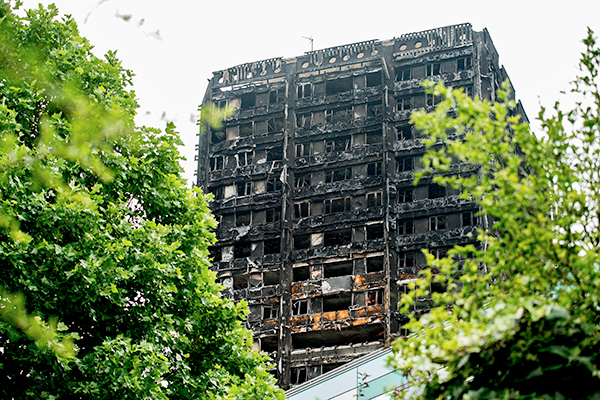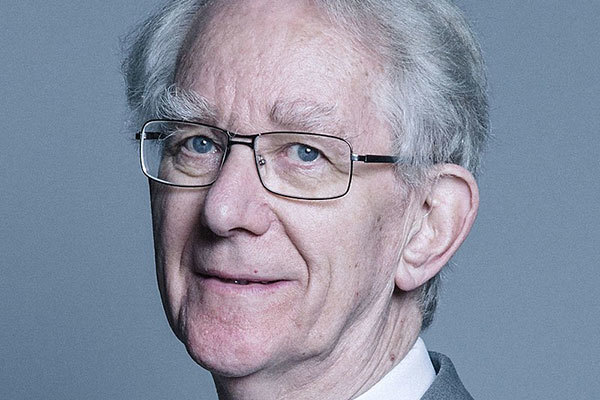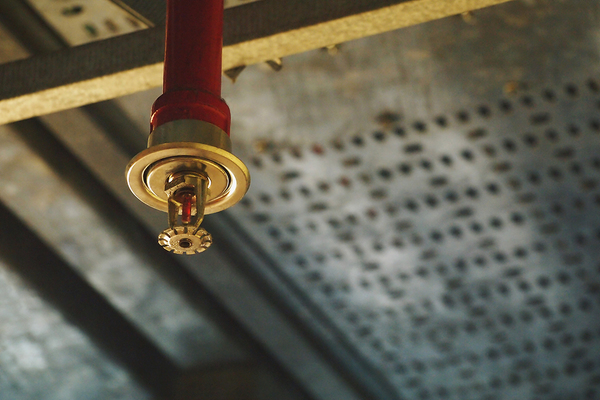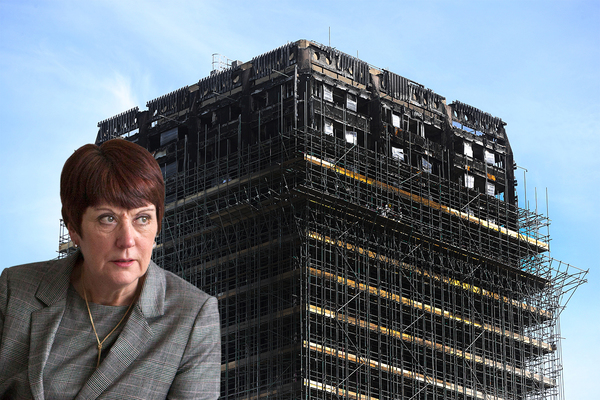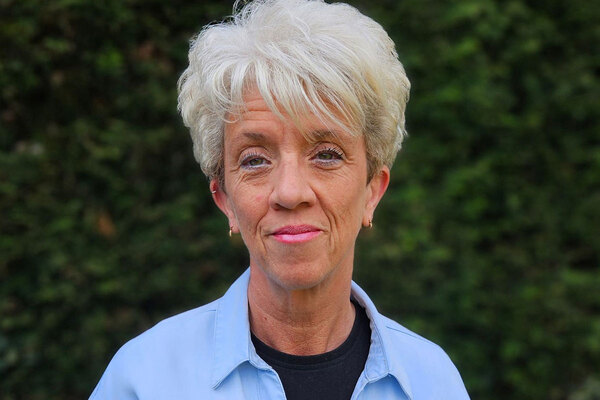You are viewing 1 of your 1 free articles
Ministers ignored fire safety calls in 2010 review, documents reveal
Ministers ignored calls for mandatory fire sprinklers and warnings that “a culture of poor standards” was putting lives at risk in the last review of regulations before Grenfell, documents released to Inside Housing reveal.
The consultation submissions to the 2010 review of building regulations carried out by the coalition government show significant warnings were issued about the mounting risk from fire safety, seven years before 72 people were killed in the blaze at Grenfell Tower.
The documents were released after the intervention of the Information Commissioner, following a 10-month battle with the Ministry of Housing, Communities and Local Government (MHCLG) who declined an original request in July last year.
The ministry only released 14 of the 54 submissions to the review – titled Future changes to Building Regulations – next steps – claiming the remaining 40 had been “deleted”.
The documents released contain calls for improved fire safety standards from three fire services, the Association of British Insurers (ABI) and other industry bodies.
In particular, the fire service responses warn of slipping standards in the building industry due in part to the rise of private-sector ‘approved inspectors’ (AIs), who are paid by developers to sign off buildings as compliant with regulations.
The Greater Manchester Fire and Rescue Services (GMFRS) raised concerns over what it described as “a culture within the construction industry of poor standards”.
It added: “This has led to established ‘stay put’ fire strategies being compromised through rapid fire and smoke spread.”
The review came at a time when the new government was committed to a programme of deregulation and cutting red tape.
Lord Andrew Stunell, the Liberal Democrat minister who carried out the review, told Inside Housing there was “pressure” to “minimise regulation” but denied it was a missed chance to prevent Grenfell.
The major warnings included:
Sprinklers
Shropshire and Staffordshire Fire and Rescue Services and the ABI all called for tougher regulations to install sprinklers.
Shropshire called for sprinklers to be included in new affordable homes, saying: “Many of these houses are likely to be occupied by some of those in our society most at risk to the effects of fire; as such we believe a unique opportunity presents itself.
“By incorporating fire suppression systems into the design and subsequent construction, we can ensure new homes are not only consistent with government policy but also safe for their occupants.”
Staffordshire added: “Substantial evidence exists to demonstrate the fact that sprinklers can be an effective and cost efficient method of greatly improving the fire safety of a building… Sprinklered buildings do not burn down and usually the fire is confined to the room (or very often area of the room) where the fire originated.”
The ABI called for “a wide-ranging review of the case for sprinklers and effective fire compartments in new buildings”, noting that building regulations could mandate sprinklers “where the risk to life may be greatest, for example in high rise buildings”.
Approved Inspectors
In 1985, Margaret Thatcher’s government part-privatised building control to allow private players, AIs, to compete with local authorities to sign buildings off as compliant.
GMFRS presented evidence of “AIs not issuing final certificates for occupied/completed projects under their supervision”. It said it believed at least 561 buildings in Greater Manchester had not been given certificates, and warned AIs were not properly inspecting projects they were reviewing. “[We do not] believe that AIs are fulfilling their commitment to maintain standards in construction,” it said.
Shropshire fire service echoed these concerns, saying it was difficult to ensure buildings inspected by AIs were safe, adding that this was “largely because the applicant has paid the approved inspector to sign off the building as compliant”.
Eight years later, Dame Judith Hackitt called for an overhaul of the AI system in her final report into the failures in the regulatory system that led to Grenfell.
The construction industry
The Passive Fire Protection Forum warned ministers of poor practices in construction. It said: “At all our meetings, and those of our member bodies concern is expressed at the lax attitude of general contractors to meeting the requirements of [Approved Document B].”
It warned that “fire safety is not a prime driver of design and tends to be neglected when it comes to procurement and construction”. The organisation gave the specific example of a building where fire doors only provided seven minutes resistance to flame, and warned “poor quality installation of many passive fire protection measures [is] endemic in the construction industry”.
GMFRS supported this view, saying: “GMFRS has experience of many domestic and non domestic premises being involved in fire and due to poor construction, not performing to the designed fire safety standard.
“This has led to established stay put fire strategies being compromised through rapid fire and smoke spread. Fire fighters are being put at significant risk where they expect a level of fire protection in a building of one or more hours, and this suddenly failing whilst they are in the building fighting a fire.”
Of the missing 40 responses, in its response to Inside Housing’s Freedom of Infomation request MHCLG said that “we do not keep records indefinitely and in the usual course of events these would have been deleted by now”.
MHCLG was contacted for comment.
Never Again campaign
In the days following the Grenfell Tower fire on 14 June 2017, Inside Housing launched the Never Again campaign to call for immediate action to implement the learning from the Lakanal House fire, and a commitment to act – without delay – on learning from the Grenfell Tower tragedy as it becomes available.
One year on, we have extended the campaign asks in the light of information that has emerged since.
Here are our updated asks:
GOVERNMENT
- Act on the recommendations from Dame Judith Hackitt’s review of building regulations to tower blocks of 18m and higher. Commit to producing a timetable for implementation by autumn 2018, setting out how recommendations that don’t require legislative change can be taken forward without delay
- Follow through on commitments to fully ban combustible materials on high-rise buildings
- Unequivocally ban desktop studies
- Review recommendations and advice given to ministers after the Lakanal House fire and implement necessary changes
- Publish details of all tower blocks with dangerous cladding, insulation and/or external panels and commit to a timeline for remedial works. Provide necessary guidance to landlords to ensure that removal work can begin on all affected private and social residential blocks by the end of 2018. Complete quarterly follow-up checks to ensure that remedial work is completed to the required standard. Checks should not cease until all work is completed.
- Stand by the prime minister’s commitment to fully fund the removal of dangerous cladding
- Fund the retrofitting of sprinkler systems in all tower blocks across the UK (except where there are specific structural reasons not to do so)
- Explore options for requiring remedial works on affected private sector residential tower blocks
LOCAL GOVERNMENT
- Take immediate action to identify privately owned residential tower blocks so that cladding and external panels can be checked
LANDLORDS
- Publish details of the combinations of insulations and cladding materials for all high rise blocks
- Commit to ensuring that removal work begins on all blocks with dangerous materials by the end of 2018 upon receipt of guidance from government
- Publish current fire risk assessments for all high rise blocks (the Information Commissioner has required councils to publish and recommended that housing associations should do the same). Work with peers to share learning from assessments and improve and clarify the risk assessment model.
- Commit to renewing assessments annually and after major repair or cladding work is carried out. Ensure assessments consider the external features of blocks. Always use an appropriate, qualified expert to conduct assessments.
- Review and update evacuation policies and ‘stay put’ advice in the light of risk assessments, and communicate clearly to residents
- Adopt Dame Judith Hackitt’s recommended approach for listening to and addressing tenants’ concerns, with immediate effect
CURRENT SIGNATORIES:
- Chartered Institute of Housing
- G15
- National Federation of ALMOs
- National Housing Federation
- Placeshapers
